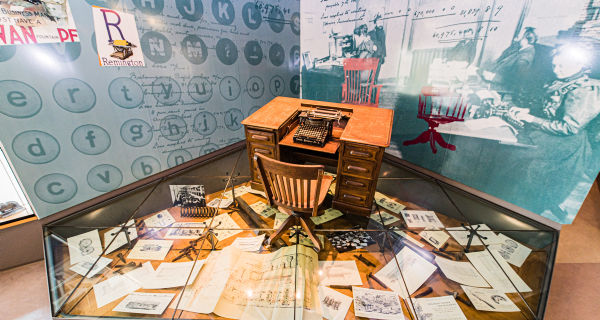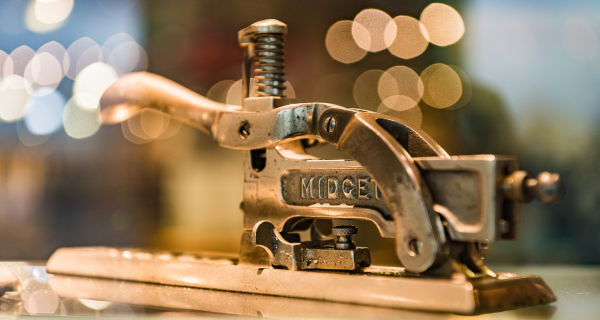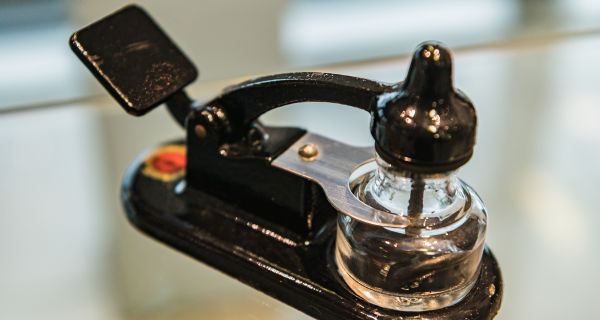Until the late 19th century, scribes and copyists dominated the office scene, carrying out their work with pen and ink standing at high desks.
In 1874, the first factory-produced typewriter appeared on the market in the USA - the Sholes & Glidden. The first people to buy them included telegraphists, stenographers and some writers including Mark Twain.
Indroduction of independent departments
Typewriters did not enjoy widespread use in offices until the 1880s - a time that was characterized by the strong growth of incorporated firms. Here, administration was increasingly arranged on a functional basis with the introduction of independent departments such as order bookings, costing, dispatch and accounting.
The functions within these units were assigned to a strict hierarchy. Under the coordination and control of managers, most employees worked on certain aspects of work without being able to recognize their significance for the whole.
Typewriting - a qualification
External correspondence and internal memos, records and reports increased along with business activity, and resulted in a mass of writing work. Machines not only made it quicker to write documents but it was also possible to prepare multiple copies for filing in one operation.
Initially, typewriting was a qualification that gave typists an advantage over scribes and copyists. Viewed over the long term, however, it involved a fall in the qualifications of staff. Reduced to simply executing superiors' orders, typists were at the lower end of the new office worker pyramid that was emerging.
Accountants - mostly women
Finally, with the change of working organization at the turn of the century, office jobs - especially routine activities - tended to be handled more and more by women. Whereas official statistics in the USA recorded seven women among 151 stenographers and typists in 1870, there were 86,000 compared with 26,000 male colleagues in 1900. The official statistics also recorded 74,000 women accountants and cashiers, and 18,000 women in other clerical jobs.


